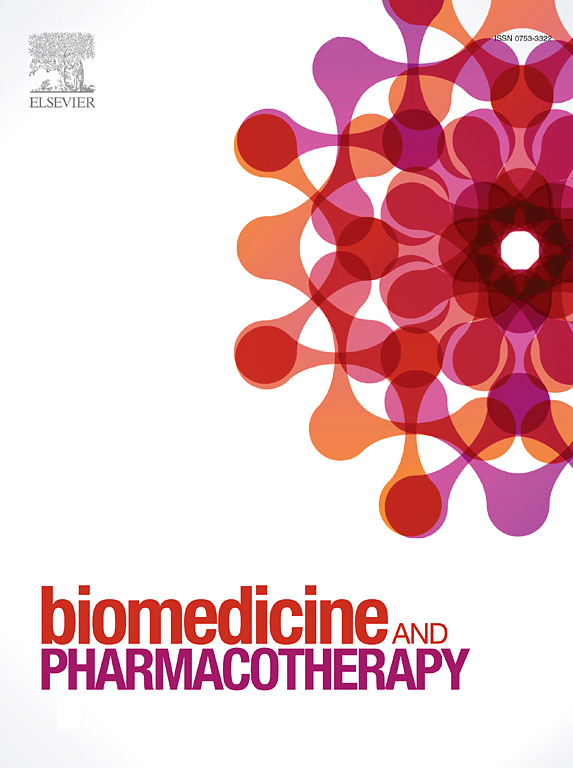基于谷胱甘肽的氧化还原蛋白信号通路与不同物种饮酒的适应性。
IF 6.9
2区 医学
Q1 MEDICINE, RESEARCH & EXPERIMENTAL
引用次数: 0
摘要
酒精使用障碍(AUD)是最普遍的药物使用障碍,但人们对其潜在的分子病因却知之甚少。在这里,我们研究了嗜饮乙醇的猕猴脑核(NAcC)的细胞膜蛋白质组,以确定对乙醇敏感的信号蛋白。随后在乙醇饮酒小鼠模型中使用生物信息学、遗传学和药理学方法对这些靶标进行了研究。在我们筛选出的 1000 多个细胞膜蛋白中,有 50 个蛋白在对照组和饮乙醇猕猴之间存在显著差异。对差异表达蛋白进行的基因本体分析发现,这些蛋白富集于调节代谢过程和蛋白酶体活性的通路中。由于谷胱甘肽 S-转移酶(GSTs)家族在这些通路中富集,因此利用生物信息学和不同基因的小鼠模型进行了针对 GSTs 的验证研究。Gstp1 和 Gstm2 在定量性状基因位点和已发表的乙醇相关表型(如乙醇偏好、条件性味觉厌恶、差异表达)基因集中被鉴定出来,而且在 Gstp2 区间遗传 C57BL/6J 等位基因的重组近交系比遗传 DBA/2J 等位基因的重组近交系消耗的乙醇量更高。基因缺失 Gstp1/2 会导致乙醇消耗量增加,但不会改变乙醇代谢或蔗糖偏好。给予 Gstp1/2 的药理激活剂肉毒碱可减少自愿的乙醇饮用量。对嗜酒猕猴细胞膜的蛋白质组分析表明,谷胱甘肽介导的氧化还原调节在乙醇相关的神经生物学中发挥作用,针对这一系统的药物干预有可能改变乙醇饮酒过量的情况。本文章由计算机程序翻译,如有差异,请以英文原文为准。
Adaptations in glutathione-based redox protein signaling pathways and alcohol drinking across species
Alcohol use disorder (AUD) is the most prevalent substance use disorder but there is incomplete knowledge of the underlying molecular etiology. Here, we examined the cytosolic proteome from the nucleus accumbens core (NAcC) of ethanol drinking rhesus macaques to identify ethanol-sensitive signaling proteins. The targets were subsequently investigated using bioinformatics, genetic, and pharmacological manipulations in mouse models of ethanol drinking. Of the 1000+ cytosolic proteins identified in our screen, 50 proteins differed significantly between control and ethanol drinking macaques. Gene Ontology analysis of the differentially expressed proteins identified enrichment in pathways regulating metabolic processes and proteasome activity. Because the family of Glutathione S-transferases (GSTs) was enriched in these pathways, validation studies targeted GSTs using bioinformatics and genetically diverse mouse models. Gstp1 and Gstm2 were identified in Quantitative Trait Loci and published gene sets for ethanol-related phenotypes (e.g., ethanol preference, conditioned taste aversion, differential expression), and recombinant inbred strains that inherited the C57BL/6J allele at the Gstp2 interval consumed higher amounts of ethanol than those that inherited the DBA/2J allele. Genetic deletion of Gstp1/2 led to increased ethanol consumption without altering ethanol metabolism or sucrose preference. Administration of the pharmacologic activator of Gstp1/2, carnosic acid, decreased voluntary ethanol drinking. Proteomic analysis of the NAcC cytosolic of heavy drinking macaques that were validated in mouse models indicate a role for glutathione-mediated redox regulation in ethanol-related neurobiology and the potential of pharmacological interventions targeting this system to modify excessive ethanol drinking.
求助全文
通过发布文献求助,成功后即可免费获取论文全文。
去求助
来源期刊
CiteScore
11.90
自引率
2.70%
发文量
1621
审稿时长
48 days
期刊介绍:
Biomedicine & Pharmacotherapy stands as a multidisciplinary journal, presenting a spectrum of original research reports, reviews, and communications in the realms of clinical and basic medicine, as well as pharmacology. The journal spans various fields, including Cancer, Nutriceutics, Neurodegenerative, Cardiac, and Infectious Diseases.

 求助内容:
求助内容: 应助结果提醒方式:
应助结果提醒方式:


